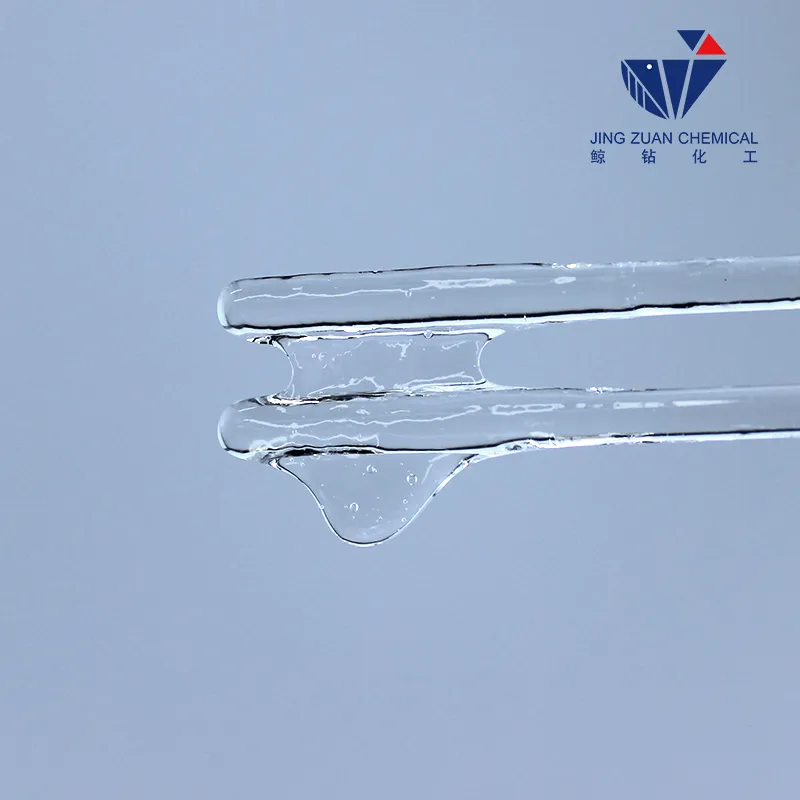
Jul . 31, 2024 01:48 Back to list
Exploring the Applications and Properties of HPMC Polymer in Modern Industries and Research
Exploring HPMC Polymer Versatile Applications and Properties
Hydroxypropyl Methylcellulose (HPMC) is a fascinating polymer derived from cellulose, a natural polymer found in the cell walls of plants. HPMC is a white, odorless powder that is soluble in water, making it a highly versatile substance with numerous applications in various industries. This article delves into the properties, applications, and benefits of HPMC, showcasing its significance in modern technology and daily life.
Properties of HPMC
HPMC belongs to the class of cellulose ethers and is characterized by its unique chemical structure. The polymer is modified by the introduction of hydroxypropyl and methyl groups, which enhance its solubility and functionality. One of the notable properties of HPMC is its ability to form a gel when mixed with water. This gelation property is essential in various formulations, making HPMC a valuable ingredient in both food and non-food products.
Moreover, HPMC exhibits excellent adhesion, thickening, and film-forming capabilities. It is non-toxic and biodegradable, aligning with the increasing demand for environmentally friendly materials. Additionally, HPMC is resistant to solvents and has stable viscosity across varying temperatures and pH levels, making it a reliable choice for numerous applications.
Applications of HPMC
HPMC is extensively utilized in the pharmaceutical industry. It acts as a binding agent in tablet formulations, ensuring uniformity and stability. Its gel-forming ability makes it an excellent excipient for controlled-release drug formulations, allowing for the gradual release of active ingredients over time. Furthermore, HPMC is used in ophthalmic solutions as a lubricant, providing relief for dry eyes and enhancing the comfort of contact lenses.
hpmc polymer

In the construction industry, HPMC serves as a key additive in cement and mortar. Its water-retaining properties help improve workability and adhesion, enhancing the durability of construction materials. The use of HPMC in tile adhesives also ensures better performance and strong bonding, contributing to the longevity of structures.
The food industry has embraced HPMC as a food additive, where it functions as a thickening agent, emulsifier, and stabilizer. HPMC is commonly found in ice cream, sauces, and dressings, helping maintain texture and consistency. Its ability to create a smooth mouthfeel makes it a popular choice for formulations requiring creamy textures without the addition of fats.
Additionally, HPMC is used in personal care products such as shampoos, conditioners, and skincare items. It provides a silky texture, enhances spreadability, and acts as a thickening agent, improving the overall formulation of these products.
Benefits and Conclusion
The advantages of using HPMC across various industries are manifold. Its non-toxic nature and biodegradability make it a preferred choice in applications prioritizing environmental sustainability. The polymer’s versatility, functional properties, and compatibility with other ingredients contribute to its widespread use and effectiveness.
In conclusion, Hydroxypropyl Methylcellulose is an extraordinary polymer with a vast array of applications spanning pharmaceuticals, construction, food, and personal care. Its unique properties not only enhance product performance but also align with the growing trend towards sustainability and safety in consumer products. As research continues to evolve and innovate, HPMC's role in various sectors is poised to expand even further, solidifying its place as a fundamental component in modern formulations.
-
Why HPMC is a Key Additive in Wall Putty Formulations
NewsAug.05,2025
-
Redispersible Powder in Decorative Renders: Function Meets Finish
NewsAug.05,2025
-
Redispersible Powder for Interior Wall Putty: Smooth Results Every Time
NewsAug.05,2025
-
HPMC’s Water Retention Capacity in Dry Mortar Applications
NewsAug.05,2025
-
HPMC Factory Contributions to Liquid Detergents
NewsAug.05,2025
-
How HPMC Factory Products Change Detergent Textures
NewsAug.05,2025







